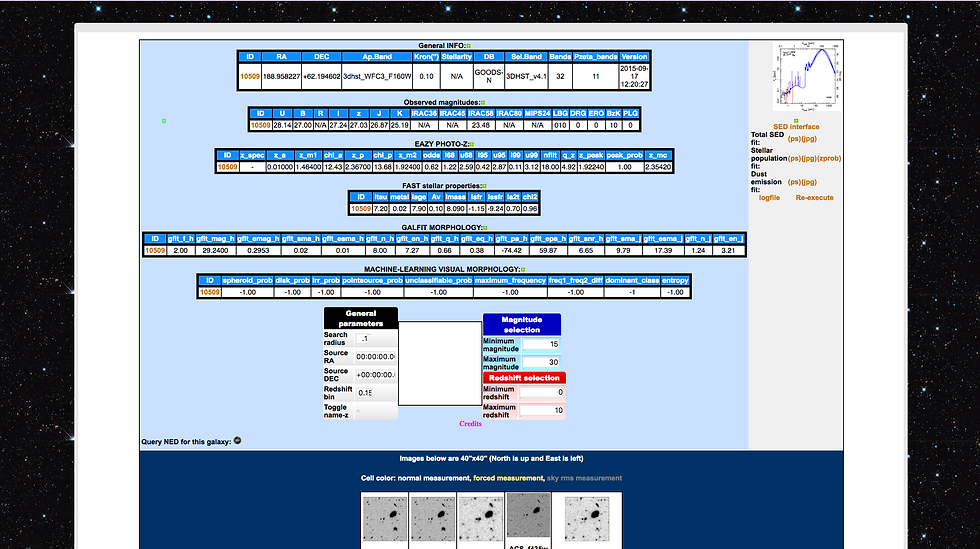#2: Research Process Updates
- Sharvani
- Mar 12, 2017
- 2 min read
This update details the more technical aspects of my project I am currently working on.
According to Professor Raja, I ought to be able to find the information I need to complete my project in the Rainbow database (which can be found here). (The values I need will relate to the galaxy's orientation and/or position angle.) However, despite his instructions making perfect sense, I am still stuck - I don't know where the information is in the database.
Below are the three webpages (found through the Rainbow database) that I am currently looking through for answers:

(No direct link is available to the page above.)

(Here is a link to the webpage above.)

(Here is a link to the webpage above.)
Note: These are not the complete pages. There are many more values to be found.
The first page is what I find when I search for the galaxy using the Rainbow database. I use the galaxy ID associated with each galaxy from the image containing the 2D spectra of these galaxies. While finding these pages is extremely easy, understanding all of these numbers is not. I can eliminate some tables of values based on their titles (for instance, I currently do not believe magnitudes are relevant to the issue my senior project is addressing) but for others I have to find out what they mean on my own. As far as I can tell, there is no standardized form of notation for these values, so I am using Google to understand as many of these terms as I can.
The one value that I currently believe is the most relevant to my project is the one listed below:


The top image is from the Rainbow Database's tutorial and explains that this position angle refers to something called the WCS reference band. I am currently attempting to understand what this term means and how it relates to the galaxy in question. Hopefully this will help answer whether this value will help me with my project or not.
During our last meeting, my advisor Mr. Hrin brought up trying to understand how spectroscopy works. This is the next technical aspect of my project I am working on. Professor Raja let me know that that the DEIMOS spectrograph on the Keck II telescope was used to collect the 2D spectra, and I am now working on understanding DEIMOS as well as spectrography in general.
I'm looking forward to this week being more productive than the last and hopefully beginning the actual process of error correction. Here's to the slightly frustrating but absolutely fantastic experience that is my senior project.




Comments